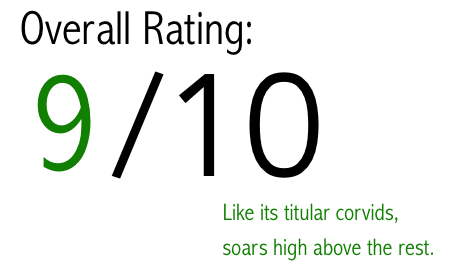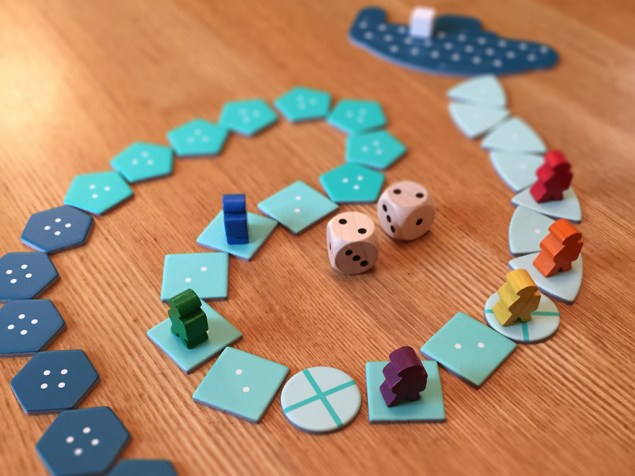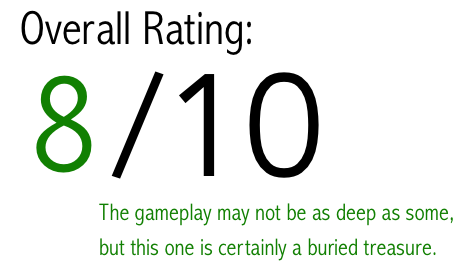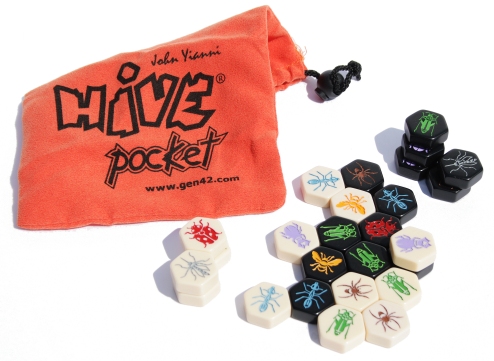
Before I ever backed a project on Kickstarter (see my review of Circle the Wagons), I was nervous about the whole ordeal. The obscene wait times before a product would arrive – sometimes years later – at your door long after you’d forgotten you’d even ordered it, my lack of understanding around whether you got your money back if the project failed or not, the rumours floating around of hideous legal dilemmas… To me it was a wonder anyone paid Kickstarter any mind. Yet when I was exploring the tabletop games on offer, I discovered a treasure trove of awesome concepts, exciting add-ons, exclusive perks, all the necessary buzzwords. After doing a little more research and discovering a lot of games are not quite what they seem – but only in the sense that many of the ‘stretch goals’ (adding more content if higher funding levels are reached) bloat and overcomplicate a game to the detriment of the original concept – I narrowed down my criteria appropriately. Keeping a keen eye out for unnecessary expansions and additions, I eventually happened upon a project whose creators, ‘Treecer’, seemed a cut above the rest, pursuing eco-friendly solutions to packaging and manufacturing in line with the game’s themes, and providing almost immediate replies and information to any fan queries. This all besides the fact that the game looked absolutely gorgeous.
Darwin’s Choice sees up to six players (although when a three-player game lasts three hours and takes up more than a entire dining room table with the side-extensions pulled out, god knows why or how you’d play with this many) competing to become the titular most-adapted species. Using head, body, leg, tail and wing cards you will create, mutate and migrate species across four constantly-shifting biomes over four rounds or ‘eras’, battling catastrophic global disasters as well as the monstrosities created by your opponents. Only survival until the very end of the game will secure any points your creatures have received, so constantly developing your strategy and your species is key to securing victory.
Positives first: the component artwork is absolutely sublime, and this should go without saying as it was a major draw towards backing the game for many people, myself included. Artist Rozenn Grosjen did an incredible job, and I’ve since ordered artwork from her Etsy store (not sponsored!) which I am very happy with. However, I’m already a little confused with some animal choices, like a number of animals that look almost identical, and the same body part was used. For example, instead of having, say, a jaguar head and a leopard body, there are leopard and jaguar bodies with no heads available for either. These two cards look identical and have almost identical stats (without getting my copy to check I’m actually 90% sure the stats are the same too because the animals are so similar). It’s a shame that there are many fairly everyday animals that aren’t included at all, like a badger, fox or stag, yet there are easily three or four almost identical ‘generic light brown deerlike creature bodies’, along with some absolutely bizarre examples that even I as an animal-lover and nature enthusiast (an aspect which very much drew me to Darwin’s Choice in the first place) have never heard of, including but not limited to a strange flying marsupial which I cannot for the life of me find on Google as I type this review at my desk.
To be Improved:
- The rulebook. Let’s get the Crocophant in the room out of the way first. My god, never in my life have I run into such a convoluted series of issues as I did trying to work out one specific rule in Darwin’s Choice. I am still adamant that I am not at fault for this. Reading the rulebook, there is a an explanation of what actions you can take on your turn. They are Create (self-explanatory), Mutate (add, remove or replace cards on a creature) and Migrate (move a creature). Whenever you perform an action, you flip the player marker on that creature – denoting it is yours – to the side with the check mark on it. You may perform an action as long as you have at least one player marker face up, as that creature has not used its action yet. However, when you create a creature you place the player marker check side up. So… Looking at the play area, once you’ve created one creature, you have no more player markers without checks. So… Your turn is over. The verbatim rule is “You may perform one action for every creature you have.” Seeing as you only have one creature, that’s your one action. Long story short, I was forced to have a long exchange with the creator over many days in order to clarify this, and all that would have solved it would be a line in the rulebook that says the ACTUAL RULE, which is “You may create as many creatures as you are able with the cards in your hand.” As it stands, nothing of the sort is in the rulebook so I have no idea how I was supposed to just assume this was the case.
- The game-breaking creatures. This is another problem that may lessen with more players, but it’s interesting that it is simply the species with the highest amount of ‘adaptability’ – having traits that match your biome, e.g. ‘swimming’ in the ocean – that gets either two or three points depending on the harshness of the biome. This makes very tactically-played creatures a little pointless, because you don’t get points EQUAL to the number of adaptability traits like I assumed you would because it feels the most natural, e.g. five points for five ‘swimming’ in the ocean biome. All a creature with high adaptability signifies is that you will never have to change or migrate it, and no one (including the person who owns that creature!) will build any more creatures in that particular biome because there’s no point trying to compete with it. It becomes a steady stream of points until the game ends with absolutely no input from the player who created it, so the game starts running itself.
- The setup. My god. Even with three people shuffling the different decks, there are so many cards and tokens to separate and shuffle and place that the setup feels like you’re waiting to evolve from a single-celled organism. Even when you’ve got it down to a science, once you’ve finished setting up there’s definitely a sense, every time I’ve played Darwin’s Choice, of ‘My god, finally, can we play now?’ It becomes an arduous task, and when you have such a long setup time looming over you before you’ve even opened the box to play, it becomes an obstacle to getting it to the table.
- The time. I can safely say I’ve never played a game that takes as long to complete as Darwin’s Choice. Even after our five or so playthroughs we still cannot finish the first three eras in under two hours, making playing it quite an endeavour that must be saved for a rainy afternoon. A LONG rainy afternoon. Maybe a weekend in a tropical rainforest just to be safe. Combine with the above-mentioned setup time and you’ve got a monster of a total runtime on your hands. Whenever I suggest Darwin’s Choice to the group we can’t help but check our watches. ‘Ooh, will we even have time?’ one player will invariably ask.
- The components. Now, this is pretty much a nitpick. As gorgeous as they are, I ran into issues shuffling the cards, especially exacerbated when there are quite literally hundreds to shuffle into one another. Granted, shuffling them in smaller sheafs works very well, but then you’re left with big chunks of cards that are never combined into one whole deck. What makes this unbearable is how difficult the cards are to pick up off any flat surface. All of this can often drag out the above-mentioned setup time even more.
- The translation. While we’re on this topic, some naming has been either strangely translated or not looked over properly, despite the creators informing me they are “Very happy with the translation.” Finding myself with a flat grey body card called a ‘cachalot’ I had to stop the game to do a quick google. Apparently it is the (quote) “Old fashioned term for a sperm whale”. Why would anyone use the archaic form of something instead of the easily-recognisable term? Another example is the ‘tuliqua rugosa’, the latin name for the blue-tongued skink. Wouldn’t… ‘blue-tongued skink’ have been simpler, more recognisable, and just plain better?
- The odd design choices. This is in terms of some of the cards. Some large cards (which are normally double sets of legs or bodies you can attach at least a head, wings and tail to, if not legs) are completed bodies, like that of an eagle. You cannot add feet, legs or a tail but you can add… Wings. Seeing as nearly all of the cards that are comprised of these ‘completed’ bodies are birds, why the hell would I need to add wings to it? It’s already got wings! This comes up a lot in our games because these creatures are all well and good until you run up against the situation I found myself in recently. I had three tails in my hand that added cold resistance, and the biome had just changed to a Polar Desert. I also had three wings, but all of my creatures already had wings, and I didn’t need to add wings to the creature that needed cold resistance because, like I just said, it ALREADY had the ‘flying’ trait on its body card. This demonstrates a number of different problems, not limited to the problem with randomly drawing cards (by this point my partner had already passed the turn after taking a single action then finding herself out of options) and the infuriating reliance the game has on temperature resistance. More on that in a moment. But my partner quickly finding herself unable to do… well, anything on her turn leads onto my next issue.
- The lack of late-game options. By the time you reach the end of the second era, most players have so many species on the board that if they were to make any more they either would’t be as adapted as their existing creatures, or they’d be too adapted and steal food off (consequently killing) their existing species (losing all the points that creature has accrued). This leaves ‘Mutating’ – adding, removing or replacing parts from your creatures – and ‘Migrating’ – moving a creature to a different biome – as your only options. Great, so when the biome changes to the ocean and your creature cannot swim, mutate it and add flippers! Well… This is the ideal scenario. But what happens instead is decidedly less exotic. See the next point.
- The reliance on temperature resistance. What a strange criticism to have to bring up, but I have seen it negatively affect every game of Darwin’s Choice that I’ve played. Let’s go by the numbers: Of the 135 small animal cards in the box, a mere EIGHT heads provide any adaptation other than swimming and/or cold resistance (for reference, there are a whopping 35 heads – that’s 26% of all the small cards available – that provide ONLY these two traits). Of those eight heads, only three provide something other than heat resistance. The rest of the heads provide nothing other than (if you’re lucky) competitive strength, which will nab you a maximum of three points at the end of each round, so is fairly inconsequential. What’s even worse is that for many of the hot and cold biomes, temperature resistance is the only adaptation that is needed! So, in terms of the above point on lack of options, whenever the biomes change, chances are you will not have to change a single thing about your creature. The polar desert will change to an ice cap, and you already have cold resistance so have nothing to do on your turn. This means that you can essentially coast all the way to the end of the game if you get a lucky starting hand and create an amazing creature with lots of temperature resistance (see the first point on game-breaking creatures; my partner is incredibly good at getting one lucky draw then winning by doing nothing for the rest of the game). If by some miracle the biome changes to a landscape that does not allow temperature resistance (i.e. a creature with cold resistance cannot survive in a desert by default) then you can easily just migrate it – which is about as exciting as picking the cards up and putting them down a few inches to the left, because that’s all it is.
- The randomness. I like that the elements of chance in the game like the random event cards and the biome changes reflect what would happen in the wild. Climate change is real, people! And the dinosaurs didn’t just up and leave of their own accord. But the aspect of Darwin’s Choice I’m starting to detest – and for all my criticisms this is really the only part of the game that makes me genuinely angry every single time – is the randomly drawn player hands. Every single time we’ve played, no matter how we draw the cards (alternating between players, all in one go, free-for-all, dealing clockwise, etc.) we all end up with hands of either five legs and five tails (meaning you cannot make any creatures as they must be at least head and body), or five heads and five bodies (meaning you can make creatures, but good luck if you want any adaptation other than cold resistance or swimming, as already stated only THREE of the heads in the entire game will offer anything but). It all gets a bit messy at this point, and the strategy that feels so good in the first two rounds devolves (*wink wink, nudge nudge*) into fighting against the hand you’ve been dealt and how you can use it the least crap way possible, rather than the best way.
Overall:
You’d think for all my grievances, this game would be nowhere other than the shelf of shame right now. But in all honesty, it’s… still a little enjoyable? I’m the only one at the table aware of all the min-maxy aspects present, these niggling little problems that seem blatant to me because I’m the most nerdy of the group. But when you’re actually sitting down with other people, and a hippo-coco-bok wanders onto the planet, you can’t help but laugh and point and clap, because it’s just silly but it’s so great a lot of the time. Even so, it can’t be overlooked that players do get increasingly frustrated at the persistently useless hands, and how little they have to do during the last two rounds. (Edit: 01/07/19 – Or, I’ve realised after a few more playthroughs, how little they have to do during ANY of the rounds if the wrong biomes come up i.e. ones that don’t require swimming or cold resistance, or even worse, don’t ALLOW cold resistance.) This has drastically lowered my opinion of the game because there are just too many random factors at play here. As there’s no way to influence any of the unseen elements like biome changes and events, there’s ALWAYS the possibility that any of the issues mentioned here will crop up, and consequently… they always do.
FINAL RATING: 4/10
May be Darwin’s choice, but it isn’t mine.

 My first two Keyforge decks, pulled from the Age of Ascension starter set, ended up being a bit of a letdown, though I didn’t think that at first. I should have realised my folly at the time, but one of the decks even prompted me after just two games to ask Reddit “What to do if you think a deck may be competitive?” Suffice to say, after purchasing two more decks – this time from the original Call of the Archons starter box – I quickly deleted that thread as I discovered there is a whole lot more to what makes a deck ‘good’.
My first two Keyforge decks, pulled from the Age of Ascension starter set, ended up being a bit of a letdown, though I didn’t think that at first. I should have realised my folly at the time, but one of the decks even prompted me after just two games to ask Reddit “What to do if you think a deck may be competitive?” Suffice to say, after purchasing two more decks – this time from the original Call of the Archons starter box – I quickly deleted that thread as I discovered there is a whole lot more to what makes a deck ‘good’.






